3.27 – Active Directory, Azure AD, LDAP, RADIUS integration
You can authenticate your users against Active Directory, LDAP or RADIUS server. Please configure your users.json as followings:
Active Directory or LDAP
{
"source": {
"type": "AD",
"properties": {
"server": "192.168.12.128:389", //can also be specified without the port
"domain": "mydomain.com",
"groups": "sales, support",
"transferCredential": false
}
}
}
You can let gateway fetch servers from the AD. The following example will fetch all the servers from the "otherLoginWorkstations" attribute:
{
"source": {
"type": "AD",
"properties": {
"server": "192.168.12.128:389",
"domain": "mydomain.com",
"groups": "sales, support",
"transferCredential": false,
"serversAttr": "otherLoginWorkstations"
}
}
}
Gateway can also change AD user password if:
- AD has SSL enabled.
- Export the AD certificate (Public key only) in Base-64 encoded X.509 file format.
- Import the AD certificate to Java keystore with following commands:
Please checkcd JRE\bin (use JDK\bin instead if JRE is not found, for example, OpenJDK11). keytool -importcert -alias "anyName" -keystore \lib\security\cacerts -storepass changeit -file "C:\Users\username\Desktop\exported.cer"https://blogs.msdn.microsoft.com/microsoftrservertigerteam/2017/04/10/step-by-stepguide-to-setup-ldaps-on-windows-server/Microsoft Tech Community Blog for moredetails.details on how to setup LDAPS on Windows. - users.json:
"tls" or "ssl" can be used for the security protocol (secProtocol).{ "source": { "type": "AD", "properties": { "server": "192.168.12.128:389", "secProtocol": "tls", "domain": "mydomain.com", "groups": "sales, support", "transferCredential": false, "serversAttr": "otherLoginWorkstations" } } }
RADIUS
{
"source": {
"type": "RADIUS",
"properties": {
"server": "192.168.12.128",
"port": "1812",
"accountingPort": "1813",
"sharedSecret": "test123"
}
}
}
You also need to configure the servers in servers.json.
Azure AD
The Azure AD connection is essentially an OAuth2 connection. You can find more information about OAuth2 here.
To connect Azure AD, you need to create a JSON file (e.g. providers.json) with the following content, or extend an existing OAuth2 JSON file:
{
"providers" : [
{
"name" : "Live",
"client_id" : "40e0b9e5-a534-4bbe-98d2-f3ff0139b67f",
"client_secret" : "UVH8Q~_e3MxQknUYzbo.bSy_lYafDBO_-R8pTWaCt",
"request_uri" : "https://login.microsoftonline.com/common/oauth2/v2.0/authorize",
"redirect_uri" : "https://www.mygateway.com/oauth2callback",
"access_token_uri": "https://login.microsoftonline.com/common/oauth2/v2.0/token",
"scope": "openid profile email"
}
]
}
Please replace https://www.mygateway.com with the address of your SparkView server.
In the gateway.conf file, this file must then be linked (if not already done with an existing file):
oauth2 = C:\\data\\oauth\\providers.json
Please note that the endpoint name "common" in the URL may be different for you. You can find more information about this here:
https://learn.microsoft.com/en-us/azure/active-directory/develop/active-directory-v2-protocols#endpoints
